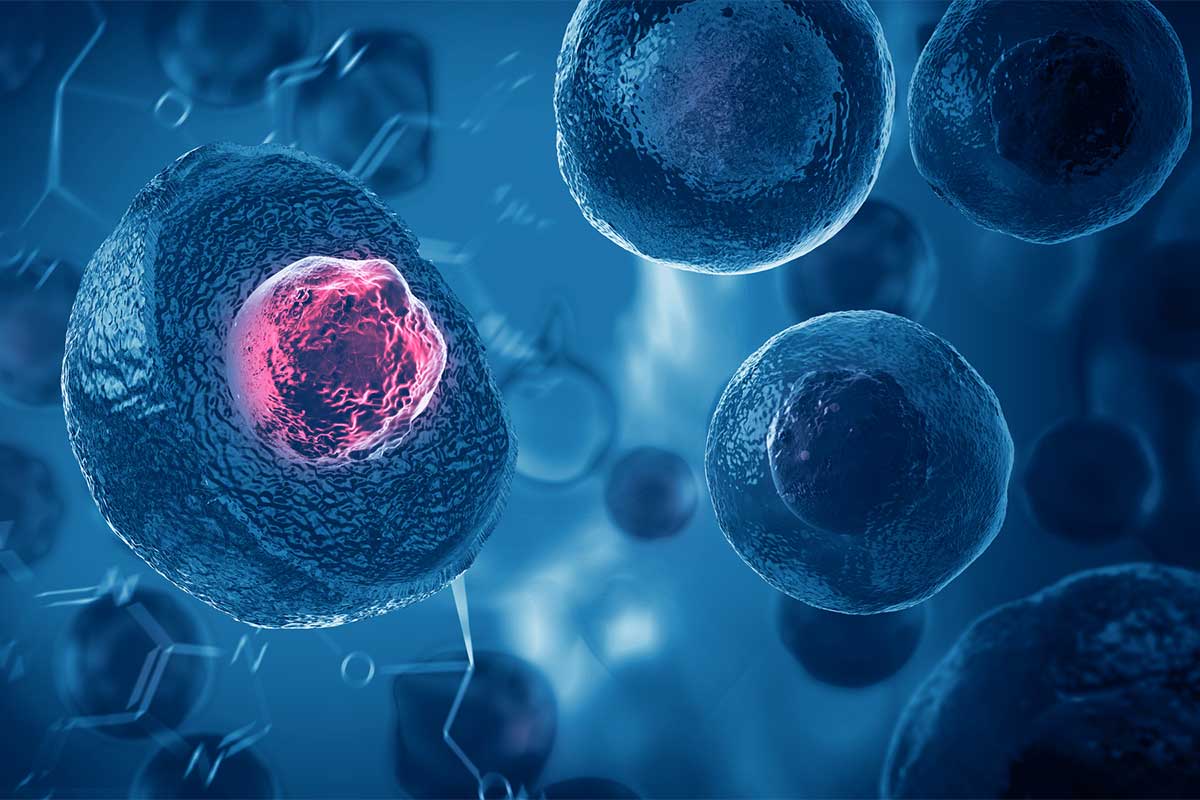What Is A Stem Cell?
What Is A Stem Cell?

The simplest explanation of what a stem cell is, is a cell that can either replicate itself (turning into new versions of itself), or a cell that can differentiate (turning into another type of cell or tissue). Stem cells are anything but simple– they are very complex cells and very beautiful in their ability to achieve a lot of coordinated healing inside the entire body. Stem cells and stem cell research are in an area of medicine known as regenerative medicine, which is essentially the science of your body’s natural ability to heal itself. Stem cells play a vital role in regenerative medicine and regenerative medicine research
Within the realm of regenerative medicine, stem cells have two primary pathways. The first, which has been known for the longest amount of time, is known as the engraftment method. The engraftment method is a process in which the stem cell attaches (or engrafts) around a damaged or diseased cell– causing that cell to change its behavior turning into a healthier version of itself.
athway number two is known as the paracrine effect. For the longest time, stem cell researchers believed that the engraftment method was the only way stem cells worked within the body– a theory which has been demonstrated as completely false. The paracrine effect has been proven to be 95% of what stem cells do.
Paracrine signaling is when a stem cell gives off a portfolio of proteins (known as growth factors and cytokines) that travel to a diseased cell, cause it to attach to the surface receptors of the diseased cell, and tell that diseased cell to change its behavior– rather than attaching and engrafting to the cell.
In research we’ve proven that 95% of a stem cells biological activity is actually the paracrine affect the paracrine signaling allowing the cell to release its natural portfolio of proteins to effectively travel to its neighboring cells in the area causing them to change their behavior or perform a specific biological function. 95% paracrine signaling only 5% of the engraftment method.
Mechanism of Action:
How growth factors and cytokines work is rather simple to understand. Think of the mechanism of action as sort of a “lock and key,” with the cytokine and the growth factor being the key, and the receptor on the surface of the cell being the lock. When the lock meets up with the key (or receptor meets up with the protein), it sends a message to the heart of that cell (the nucleus) causing a change in genetic expression. That specific growth factor is coated with a specific message, a synthesis happens within the cell causing a new protein to get produced, and this protein gets released from the cell and travels to the neighboring cells, and so on.
This is what’s known as paracrine signaling. This is 95% of what happens within the body and within the skin. Synthesizing proteins travel to their neighboring cells, get synthesized again, and so on and so forth. This process is called cell to cell communication or crosstalk.
It is important to remember in topical skincare therapies that it is not the stem cell itself that’s ever used in a product meant to be applied to the skin. In fact, stem cells in a bottle would not be viable for a variety of reasons. First, the stem cell would die in a bottle, and a stem cell must be alive to allow it to produce its natural portfolio of proteins. Next, a stem cell applied topically would not be able to penetrate into the skin.
As a result, when you hear the words “stem cells” or “growth factors” in skincare, these terms always refer to the growth factors and cytokines given off by a stem cell in a laboratory culture that are used, collected, and applied to the skin topically. These growth factors and cytokines can come from a stem cell, but the cell itself is never used in the actual product.
The above chart is a nearly perfect explanation of why growth factors and cytokines are a vital and non-negotiable in your skin care routine. From the Journal of Drugs and Dermatology, this chart shows that growth factors and cytokines actually sit at the top of the skin health pyramid. While there are plenty of ingredients that we use in skincare that are often put in that non-negotiable category (antioxidants, peptides, certain retinoids, etc.), the growth factors and cytokines orchestrate the entire process.
It may be helpful to think of each of these common ingredients as musicians in a symphony– each playing their respective part, while the growth factors and cytokines act as the symphony’s conductor. The growth factors and cytokines potentiate the effectiveness and potency of all of the other ingredients you use. Utilizing the right types of growth factors and cytokines in your skincare can make all your other ingredients work that much better.
The body produces hundreds of these protein molecules (the growth factors and cytokines), and this chart explains some of the molecules that are involved in regenerative therapeutics. Growth factors and cytokines can either lean inflammatory or they can lean anti-inflammatory, which is very important to remember when we get into all the different sources available to harvest growth factors and cytokines.
Growth factors and cytokines are never produced in isolation by the body. When you find a skincare product that has a growth factor used in isolation (for instance epidermal growth factor or EGF products), these proteins do not exist or produced in isolation. As a result, products that leverage growth factors in isolation tend to not function very well, and may achieve the opposite result of what you are trying to achieve. When using a growth factor product, be sure to use something that contains a physiologically balanced portfolio of these proteins in order to induce a physiologically balanced response when applied to the skin.
In the next section, we are going to discuss all the different types of cell sources that can be used to harvest these powerful growth factors, cytokines, and healing proteins.

